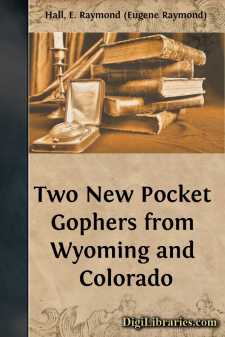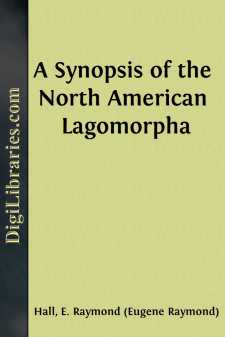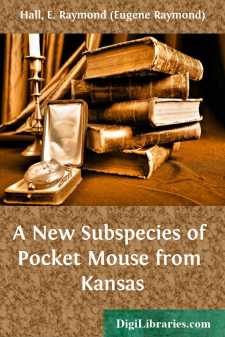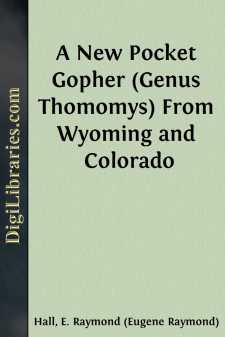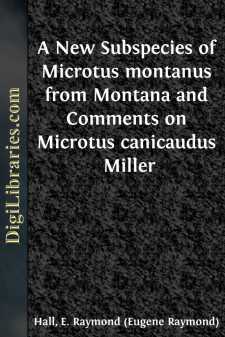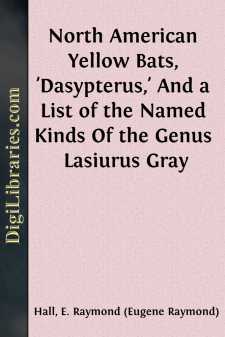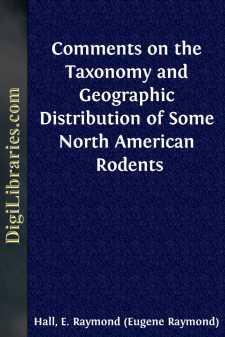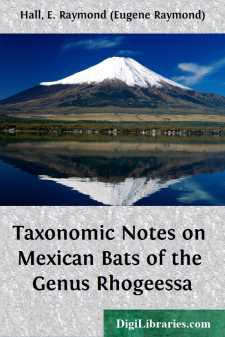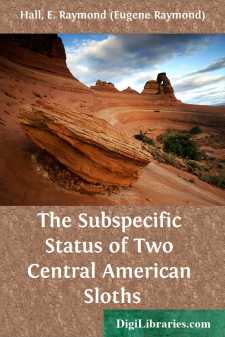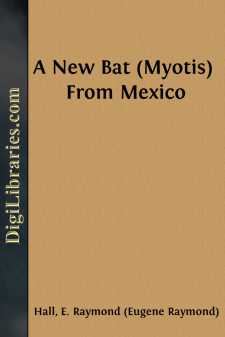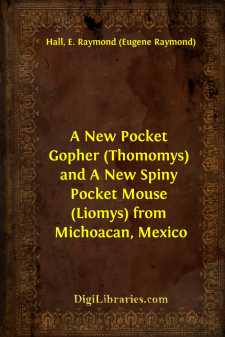Categories
- Antiques & Collectibles 13
- Architecture 36
- Art 48
- Bibles 22
- Biography & Autobiography 813
- Body, Mind & Spirit 142
- Business & Economics 28
- Children's Books 17
- Children's Fiction 14
- Computers 4
- Cooking 94
- Crafts & Hobbies 4
- Drama 346
- Education 46
- Family & Relationships 57
- Fiction 11829
- Games 19
- Gardening 17
- Health & Fitness 34
- History 1377
- House & Home 1
- Humor 147
- Juvenile Fiction 1873
- Juvenile Nonfiction 202
- Language Arts & Disciplines 88
- Law 16
- Literary Collections 686
- Literary Criticism 179
- Mathematics 13
- Medical 41
- Music 40
- Nature 179
- Non-Classifiable 1768
- Performing Arts 7
- Periodicals 1453
- Philosophy 64
- Photography 2
- Poetry 896
- Political Science 203
- Psychology 42
- Reference 154
- Religion 513
- Science 126
- Self-Help 84
- Social Science 81
- Sports & Recreation 34
- Study Aids 3
- Technology & Engineering 59
- Transportation 23
- Travel 463
- True Crime 29
Two New Pocket Gophers from Wyoming and Colorado
Description:
Excerpt
In the academic year of 1947-48 Montague studied the geographic variation in Thomomys talpoides of Wyoming. His study was based upon materials then in the University of Kansas Museum of Natural History. Publication of the results was purposely delayed until previously reported specimens from certain adjacent areas, especially in Colorado, could be examined. In the autumn of 1950 one of us, Hall, was able to examine the specimens from Colorado; also, the specimens from Wyoming accumulated in the past two seasons of field work in Wyoming were examined by Hall. A result of these studies is the recognition of two heretofore unnamed subspecies of the northern pocket gopher in southeastern Wyoming.
Grateful acknowledgment is made of the opportunity to study the Coloradon specimens in the Biological Surveys Collection of the United States National Museum, and of the financial assistance from the Kansas University Endowment Association which permitted the field work in Wyoming.
Descriptions and names for the two new subspecies are given below:
Thomomys talpoides rostralis new subspecies
Type.—Female, adult, skull and skin, no. 17096 Mus. Nat. Hist., Univ. Kansas; from 1 mi. E Laramie, 7164 ft., Albany County, Wyoming; obtained on July 16, 1945, by C. Howard Westman; original no. 320.
Range.—Southern Wyoming and south in the mountains of Colorado to the Arkansas River but not including the Colorado River drainage except in Grand County and part of Routt County.
Diagnosis.—Size medium (see measurements); upper parts ranging from between Cinnamon-Rufous and Hazel (capitalized terms are of Ridgway, Color Standards and Color Nomenclature, Washington, D. C., 1912) in the eastern part of the range to between Argus Brown and Brussels Brown in the western part of the range; sides Cinnamon-Rufous; throat whitish; remainder of under-parts whitish, in many specimens tipped with Ochraceous-Buff; feet and tail whitish; rostrum long; nasals ordinarily truncate posteriorly; temporal ridges nearly parallel; interpterygoid space broadly V-shaped.
Comparisons.—From Thomomys talpoides clusius (topotypes), T. t. rostralis differs in: Body longer; color more reddish (lighter with less brownish and more ochraceous); rostrum both longer and broader, actually and also in relation to length of the skull; skull broader interorbitally; upper molariform tooth-row longer; tympanic bullae less inflated. For comparison with T. t. attenuatus to the east, see the account of that subspecies.
From Thomomys talpoides macrotis (topotypes) to the southeast, T. t. rostralis differs in: Body shorter; upper parts slightly more ochraceous and less grayish; skull averaging smaller in all measurements except that interorbital region is broader and rostrum and upper molariform tooth-row are longer; nasals truncate versus emarginate, and consistently shorter; basilar length consistently less in specimens of equal age; mastoidal breadth less in 16 of 17 specimens of rostralis; temporal ridges parallel instead of divergent posteriorly; exposed parts of upper incisors shorter; tympanic bullae more angular antero-laterally.
From Thomomys talpoides fossor (specimens from Rico, Silverton, Hermit and Pagosa Springs, all in Colorado), the subspecies to the southward, T. t. rostralis differs in: Longer body; lighter color of upper parts; nasals truncate rather than rounded posteriorly; temporal ridges more nearly parallel (less divergent posteriorly); rostrum longer (averaging longer and broader); skull wider across zygomatic arches in 11 of 12 specimens of rostralis.
Remarks.—Geographic variation is evident in the material examined. In the initial study, one of us, Montague, separated the material from the Medicine Bow Range in Wyoming as a subspecies different from that at Laramie and the adjoining mountains to the eastward because of the darker color of the western animals and the smaller size of males....


